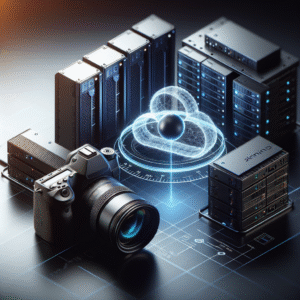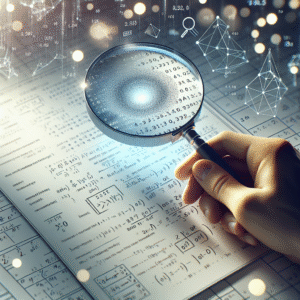Mastering Retrieval-Augmented Generation: Your Go-To Guide for Success
Table of Contents
- 1. Introduction
- 2. Understanding Retrieval-Augmented Generation
- 3. The Importance of Retrieval-Augmented Generation
- 4. Key Components of Retrieval-Augmented Generation
- 5. How Retrieval-Augmented Generation Works
- 6. Implementing Retrieval-Augmented Generation
- 7. Real-World Applications of Retrieval-Augmented Generation
- 8. Challenges and Limitations
- 9. The Future of Retrieval-Augmented Generation
- 10. Conclusion
1. Introduction
In the fast-paced world of artificial intelligence and machine learning, there’s a technique that’s really making waves: Retrieval-Augmented Generation, or RAG for short. Picture this: machines that not only whip up text but also pull in relevant info from huge databases, blending the best of both worlds—retrieval and generative models. Sounds futuristic, right? But this is the reality of RAG, and it’s something that professionals across various fields need to get familiar with.
According to a recent Gartner report, by 2025, a whopping 75% of organizations will transition from just testing AI to fully operationalizing it. That’s a clear call for businesses to embrace advanced techniques like RAG. This guide is here to break down what Retrieval-Augmented Generation is all about, giving you a solid understanding of its components, how it works, and where it can be applied. Whether you’re a data scientist, a software engineer, or just someone curious about AI, you’ll find valuable insights that can help you leverage RAG effectively.
As we go through this post, you’ll not only get the foundational ideas behind RAG but also discover tried-and-true techniques and actionable tips that can really make a difference in your work. So, let’s dive in and explore the fascinating world of Retrieval-Augmented Generation!
2. Understanding Retrieval-Augmented Generation
So, what exactly is Retrieval-Augmented Generation (RAG)? It’s essentially a hybrid approach that fuses the powers of information retrieval systems with generative models. In simple terms, RAG taps into external knowledge bases to supercharge the generative process of language models, allowing them to deliver responses that are not just contextually relevant but also spot-on accurate.
2.1 What is Retrieval-Augmented Generation?
At its heart, RAG works by first hunting down pertinent documents or snippets of information from a database before generating any responses. This setup gives it an edge, producing outputs that are more informed and accurate, unlike traditional language models that often rely solely on their training data.
2.2 The Mechanism of RAG
Here’s how RAG operates: it has two main players—the retriever and the generator. The retriever’s job is to scope out relevant context from a knowledge base based on the input query, and then the generator uses that context to craft a coherent response. This teamwork ensures that what gets generated is not just grammatically correct but also factually accurate.
2.3 The Evolution of RAG
RAG isn’t something that’s been around forever; it’s a relatively new player in the arena of natural language processing (NLP). It emerged from advancements in transformer architectures and the growing availability of extensive databases. With the rising demand for smarter AI applications, RAG has stepped into the spotlight as a powerful tool to elevate the quality of generated text.
3. The Importance of Retrieval-Augmented Generation
In today’s data-centric world, the significance of Retrieval-Augmented Generation is hard to overstate. As businesses seek out smarter systems, RAG brings a host of benefits that really set it apart from traditional generation methods.
3.1 Enhancing Accuracy and Relevance
One of the standout features of RAG is how it boosts the accuracy and relevance of the content it generates. By grounding its responses in retrieved documents, RAG significantly reduces the chances of spitting out misleading or incorrect information, leading to outputs that users can actually trust.
3.2 Improving User Experience
When it comes to chatbots and virtual assistants, user experience is key. RAG enables these systems to deliver richer and contextually aware responses, which in turn elevates user satisfaction and engagement. Imagine asking a question and getting an answer that feels spot-on and relevant—that’s the magic of RAG!
3.3 Streamlining Knowledge Management
In any organization, managing knowledge effectively is crucial for staying efficient and effective. RAG makes it easier to pull up relevant information from vast databases, saving time and resources. This means employees can find the info they need quickly, promoting a culture of knowledge sharing and collaboration.
4. Key Components of Retrieval-Augmented Generation
If you want to implement Retrieval-Augmented Generation effectively, it’s essential to grasp its key components. Each element plays a vital role in creating a smooth experience for retrieving and generating information.
4.1 The Retriever
The retriever is where it all begins in the RAG setup. It’s responsible for finding relevant documents based on the input query. Typically, it uses methods like vector similarity search or good old keyword matching to pinpoint the information that matters most.
4.2 The Generator
After the retriever has done its thing, the generator steps in to weave together a response. This part relies on advanced language models like GPT-3 or BERT to create text that’s not just coherent but also contextually appropriate based on what was retrieved.
4.3 Knowledge Base
The knowledge base is the backbone of RAG, acting as the repository from which relevant documents are drawn. Having a well-organized knowledge base—be it packed with articles, FAQs, or research papers—greatly enhances how effective the RAG system can be.
5. How Retrieval-Augmented Generation Works
To really appreciate how Retrieval-Augmented Generation functions, let’s break it down into a few key steps.
5.1 Input Query Processing
The process kicks off when a user submits a query. The system takes a moment to analyze the input to grasp its context and intent. This step is critical for ensuring that the retrieval aligns perfectly with what the user is looking for.
5.2 Document Retrieval
Once the input is processed, the retriever swings into action, searching through the knowledge base. It identifies and ranks documents based on their relevance, often using methods like TF-IDF (Term Frequency-Inverse Document Frequency) or embeddings for vector-based retrieval.
5.3 Response Generation
After pulling in the most relevant documents, the generator synthesizes a response by integrating info from these sources. This involves using natural language understanding and generation techniques to ensure that the output is both informative and contextually relevant.
6. Implementing Retrieval-Augmented Generation
Bringing Retrieval-Augmented Generation into a real-world setting involves a series of steps, from setting up the infrastructure to training and deploying the model.
6.1 Infrastructure Setup
The first step in rolling out RAG is to set up the necessary infrastructure. This means choosing the right cloud service or on-premises solution to host your knowledge base and models. You’ll need robust data storage and retrieval systems to ensure smooth access to information.
6.2 Model Selection and Training
Selecting the right models for both the retriever and generator is crucial. You can either tap into pre-trained models or develop your own tailored to specific use cases. Fine-tuning these models with domain-specific data can dramatically boost their performance, leading to more accurate results in niche areas.
6.3 Deployment and Monitoring
Once your models are all set, it’s time for deployment. It’s important to keep a close eye on how the RAG system performs. This includes evaluating the accuracy of the retrieved documents and the quality of the responses generated, allowing for ongoing improvements over time.
7. Real-World Applications of Retrieval-Augmented Generation
RAG has already made its mark across a variety of industries, each reaping the rewards of its unique capabilities.
7.1 Customer Support Chatbots
In customer support, RAG-powered chatbots shine by providing accurate and relevant answers to inquiries. They tap into extensive FAQs or product databases, not only boosting customer satisfaction but also lightening the load for human agents.
7.2 Content Creation and Curation
Content creators can harness RAG to craft well-researched articles, blogs, and social media posts that are factually reliable. By pulling in information from reputable sources, RAG helps creators produce quality content that resonates with their target audience.
7.3 Research and Academia
Researchers benefit from RAG systems when gathering insights from a wealth of academic papers and studies. This capability streamlines the research process, helping scholars keep up with the latest developments in their fields.
8. Challenges and Limitations
While Retrieval-Augmented Generation comes with plenty of upsides, it’s important to consider some of the challenges and limitations that come with implementing it.
8.1 Data Privacy and Security
A primary concern with RAG is ensuring data privacy and security. Organizations need to safeguard sensitive information and ensure compliance with data protection regulations.
8.2 Dependence on Quality Data
The effectiveness of RAG hinges heavily on the quality of data in the knowledge base. If the information is poorly curated or outdated, it can lead to inaccurate outputs—something that could really hurt the system’s credibility.
8.3 Technical Complexity
Getting RAG systems up and running can be quite complex, requiring a mix of expertise in machine learning, data management, and software engineering. Organizations might find it challenging to assemble the right talent and resources to build and maintain these systems.
9. The Future of Retrieval-Augmented Generation
The future of Retrieval-Augmented Generation is looking bright, especially as AI and machine learning continue to advance. Several trends are shaping the journey of RAG technology.
9.1 Integration with Other AI Technologies
As AI technologies evolve, we can expect RAG to blend seamlessly with other models and systems, enhancing its capabilities. For example, pairing RAG with reinforcement learning could lead to responses that are even more adaptive and personalized.
9.2 Enhanced User Interactions
Future RAG systems will likely put a spotlight on improving how users interact with them, incorporating conversational AI techniques for a more engaging and intuitive experience. This shift will make RAG systems even more user-friendly and accessible.
9.3 Expansion into New Domains
We can anticipate RAG expanding into fresh territories, like healthcare, finance, and education. By delivering accurate and contextually relevant information, RAG can revolutionize how industries operate and connect with their audiences.
10. Conclusion
Retrieval-Augmented Generation is a groundbreaking approach that amplifies the capabilities of traditional language models by weaving in retrieval mechanisms. As businesses increasingly turn to AI for effective solutions, understanding RAG becomes crucial for tapping into its potential to provide accurate, relevant, and contextually aware responses.
As we’ve explored in this guide, implementing RAG involves a complex interplay of components, including the retriever, generator, and knowledge base. By being aware of the challenges and embracing the promising future of RAG, professionals can achieve significant results across various sectors.
In closing, mastering Retrieval-Augmented Generation not only empowers individuals and organizations to produce high-quality, informed outputs but also positions them at the cutting edge of AI innovation. Ready to embark on your RAG journey? Dive into the available resources and tools in this exciting field and watch your capabilities broaden!






